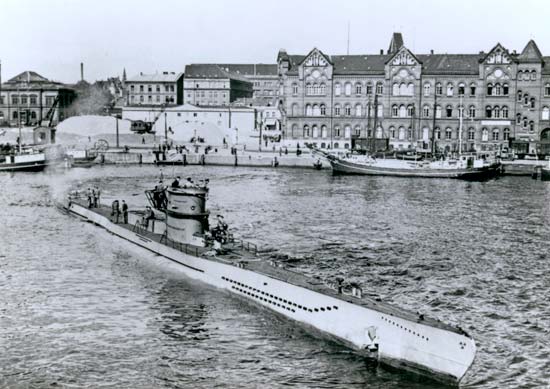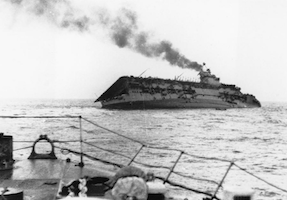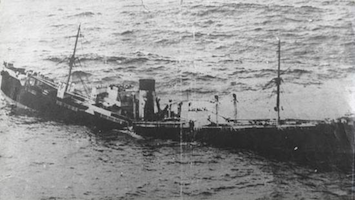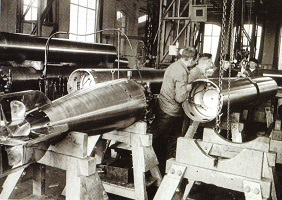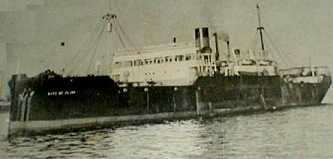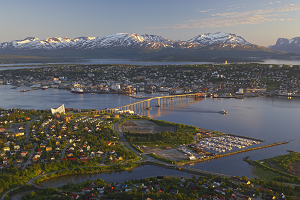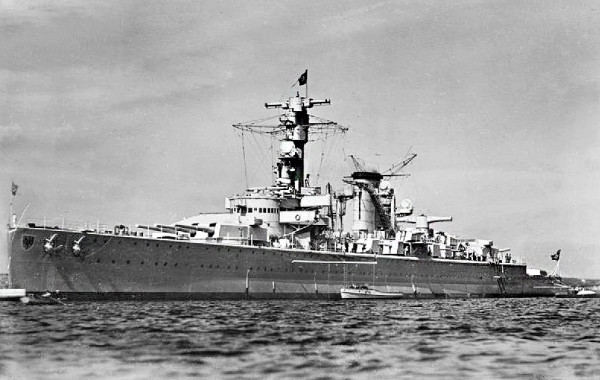Captain Joseph A. Gainard, master of the American freighter, City of Flint, expected the notoriety he and his ship gained after rescuing survivors of the Athenia tragedy would quickly fade when he sailed Oct. 3, 1939, with a cargo bound for Liverpool, England. (See blog post City of Flint Odyssey, Part 3, Oct. 15, 2015.)
Gainard’s welcome return to obscurity lasted only until Oct. 9 when the German pocket battleship Deutschland appeared from over the horizon and ordered City of Flint to stop and be boarded. Gainard wasn’t worried. The United States and Germany weren’t at war and he considered his ship’s cargo to be quite innocent. In his memoir, Gainard described his initial meeting with the officer in charge of the German boarding party:
“I saluted, then held out my hand. ‘Glad to have you aboard,’ I said.
“He was pleased with our formality and politeness and did his best to match it himself. He said, ‘Captain, I am sorry to cause you inconvenience, but this is war. I must ask to see your papers.’
“…We had apples, asphalt, wax, machinery, lumber, tractors, canned goods, cereals, tobacco, lard, flour, oil, grease and general cargo. ‘This is bad,’ the German said. ‘You have 20,000 drums of oil on board. What kind of oil is it?’
“‘Lubricating oil,’ I told him
“‘That is bad,’ he said. ‘And this flour, what is it?’
“‘White-bread flour.’
“‘Is it easily accessible?’ he asked. I told him that it would take at least five hours to unload the flour and showed him the cargo plan to prove it.
“‘Under the laws of my country, you are guilty of carrying contraband to the enemy,’ he told me.”
To Gainard’s dismay, the Deutschland sent across an armed prize crew and ordered City of Flint to sail to Germany. Though he and his crew would operate the ship, they would do so under the close supervision of the prize crew commanded by Leutnant Hans Pushbach, a veteran of the Imperial German Navy who spoke excellent English.
The Yankee skipper was in an awkward position. The German crew proved to be reasonable and polite, but they were armed with pistols, machine guns, and grenades, and made it clear they would not hesitate to use their weapons to maintain control of the ship. Like the rest of his men, Gainard resented being under German control. But he had to keep his crew from taking any action that might cause an incident serious enough to jeopardize America’s neutrality. International prize rules at the time gave the Germans authority to commandeer the American ship’s cargo.
Nevertheless, the crew constantly schemed to find a way to rid their ship of the Germans. Flaws inevitably appeared as these plans were being worked out and they would be abandoned. Once or twice, however, the plans seemed almost plausible. But as Gainard observed in his memoir, the Germans inevitably sniffed them out:
“They fraternized with my crew and a couple of [the Germans] knew English but never let on about it. They would stand around watching card games in the crew’s quarters and listen to everything that was said. Then they’d go and report to their Captain.
“Every few days [Pushbach] would come up to me and say: ‘Well, tonight I think we have monkey business.’
“So I would then go the rounds and talk to the crew, and tell them there wasn’t a chance of their scheme getting across, that the Germans were already wise to them.”
A problem with City of Flint’s radio could not be fixed by the German technicians, who refused any help from Gainard’s crew. As a result, the ship could not communicate with the rest of the world. The best they could do was listen to news broadcasts over the short-wave radio to find out what the world knew about their situation. Unable to talk to his superiors, or to determine the extent of British fleet operations, Leutnant Pushbach decided City of Flint should make for Norway, a neutral country, where he might be able to gain information through German diplomatic channels.
It was a risky move for the German, and it would prove to be Pushbach’s undoing, but not before City of Flint’s odyssey would take it all the way to the Soviet Union, as we will see in our next blog.
